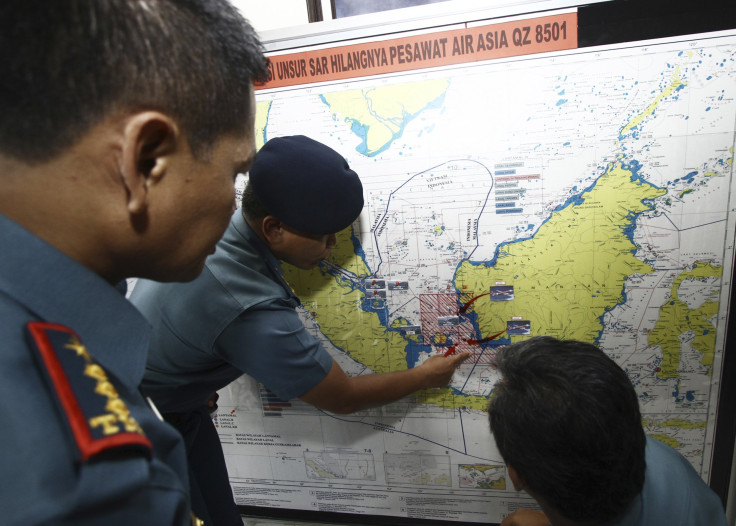QZ8501 Location Search: Indonesia To Test Whether Discovered Oil Patch Belongs To AirAsia Flight

Search efforts have intensified around two oil patches discovered in the straits where AirAsia Flight QZ8501 was reported to have gone down over the weekend. A helicopter discovered the oily spots in the Java Sea off Belitung Island on Monday, and Indonesia sent a ship to test if the patches were aircraft fuel or merely false alarms.
“We are making sure whether it was avtur (aviation fuel) from the AirAsia plane or from a vessel because that location is a shipping line,” Indonesian Air Force spokesperson Hadi Tjahjanto told AFP. Bambang Soelistyo, National Search and Rescue Agency chief, said officials will know the results on Tuesday. Soelistyo earlier hypothesized that the plane was likely at the “bottom of the sea.”
AirAsia Flight QZ8501 went missing on its trip from Surabaya, Indonesia, to Singapore early Sunday. The aircraft had 162 people on board. An hour after its departure, air traffic control reported that it lost contact with the plane.
Australia, Malaysia, Singapore, China, India, the United States, and South Korea have offered to help Indonesia with the search. Australian planes have spotted objects in the sea 700 miles from the plane’s last known location, but search efforts yielded nothing as it went on into its second day. Indonesian Vice President Boediono confirmed the sighting of the objects in the sea, but said that links to the missing QZ8501 could not be made. The search efforts included three warships, 12 rescue vessels, five aircraft, and two helicopters from Indonesia, one maritime surveillance plane from Australia, two aircraft and two ships from Singapore and one aircraft and one ship from Malaysia.
While parallels have been drawn to the case of the missing Malaysian Airlines Flight MH370, experts have said this search will be different. That aircraft vanished from the radar with 239 people on board over the south Indian Ocean roughly nine months ago.
“The bottom is a lot shallower, which makes it easier for underwater searching to find if there is debris at the bottom,” John McGraw, a former deputy safety director at the U.S. Federal Aviation Administration, said to Bloomberg. “It’s a mystery, but it’s a mystery that will not last for long.”
© Copyright IBTimes 2025. All rights reserved.






















